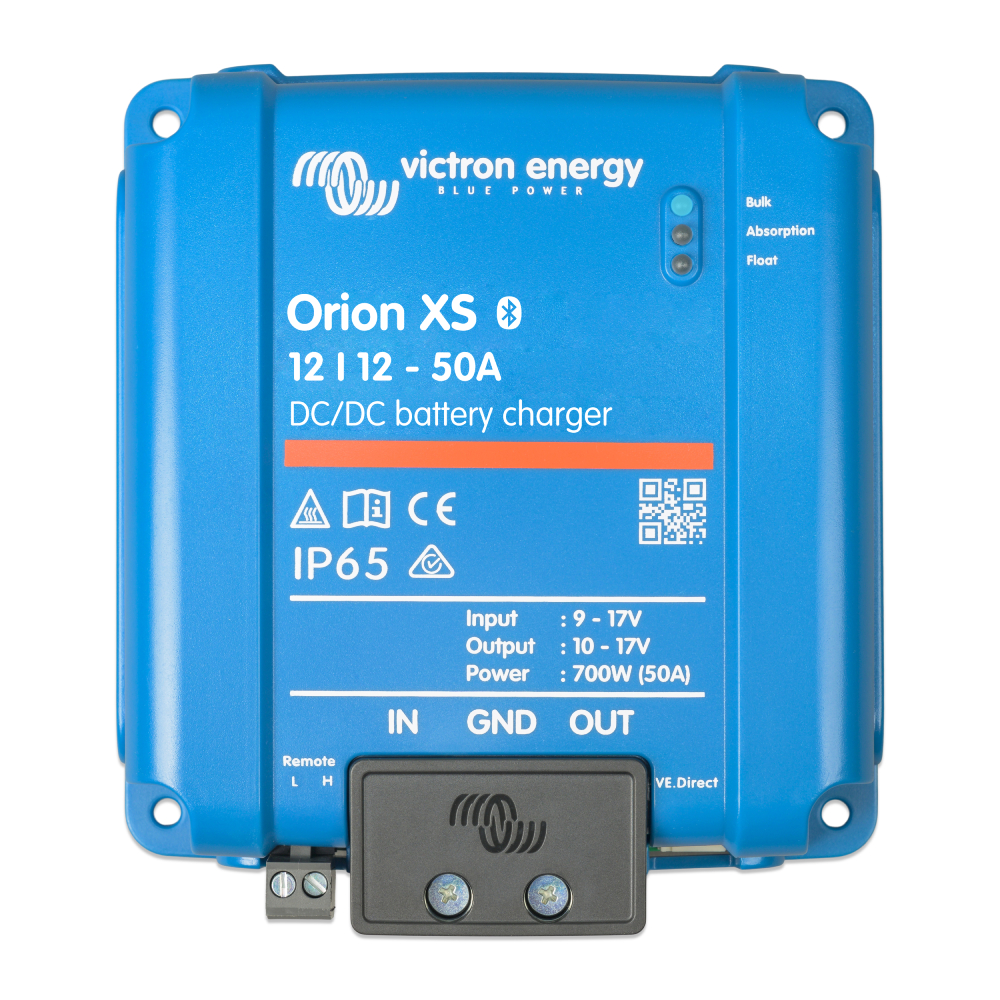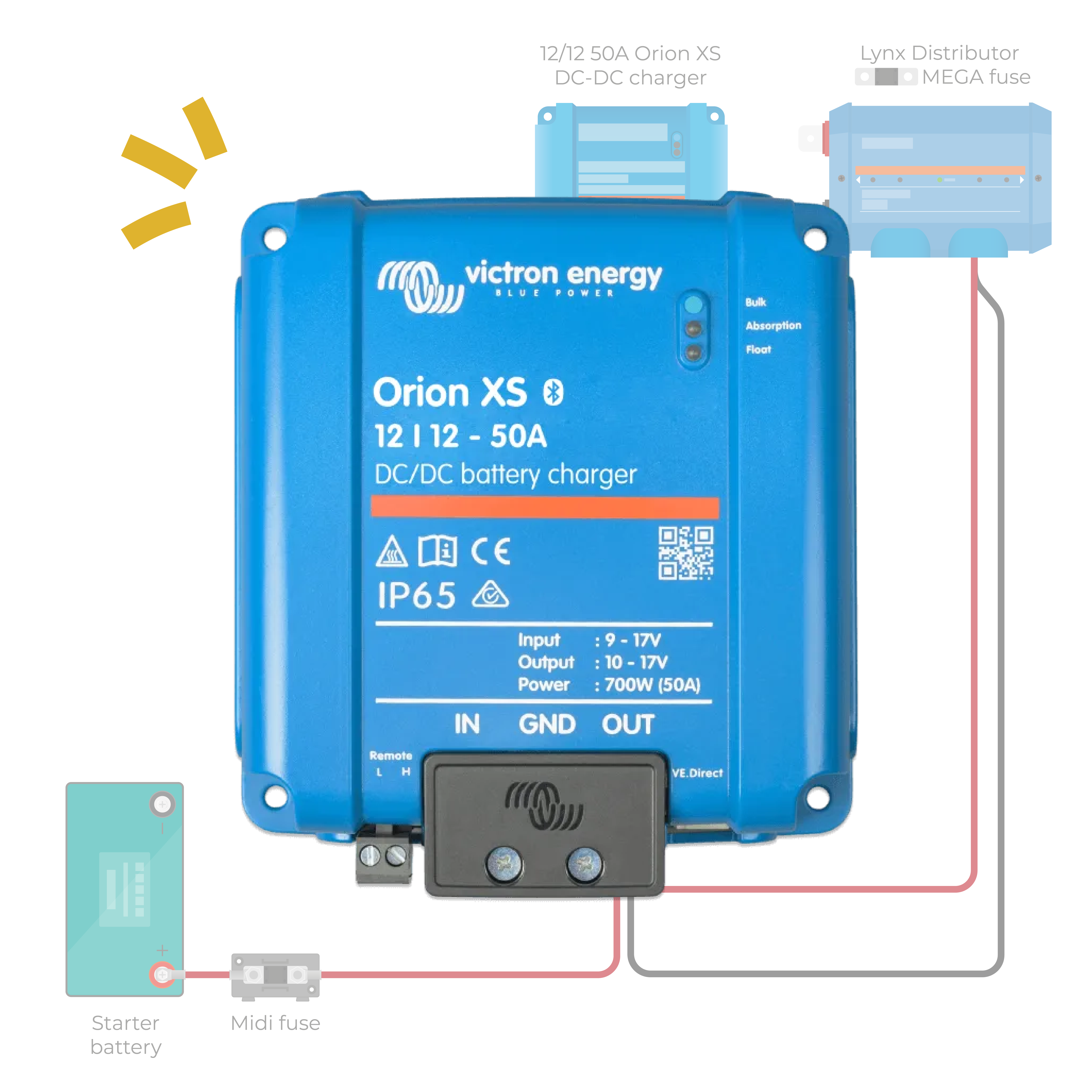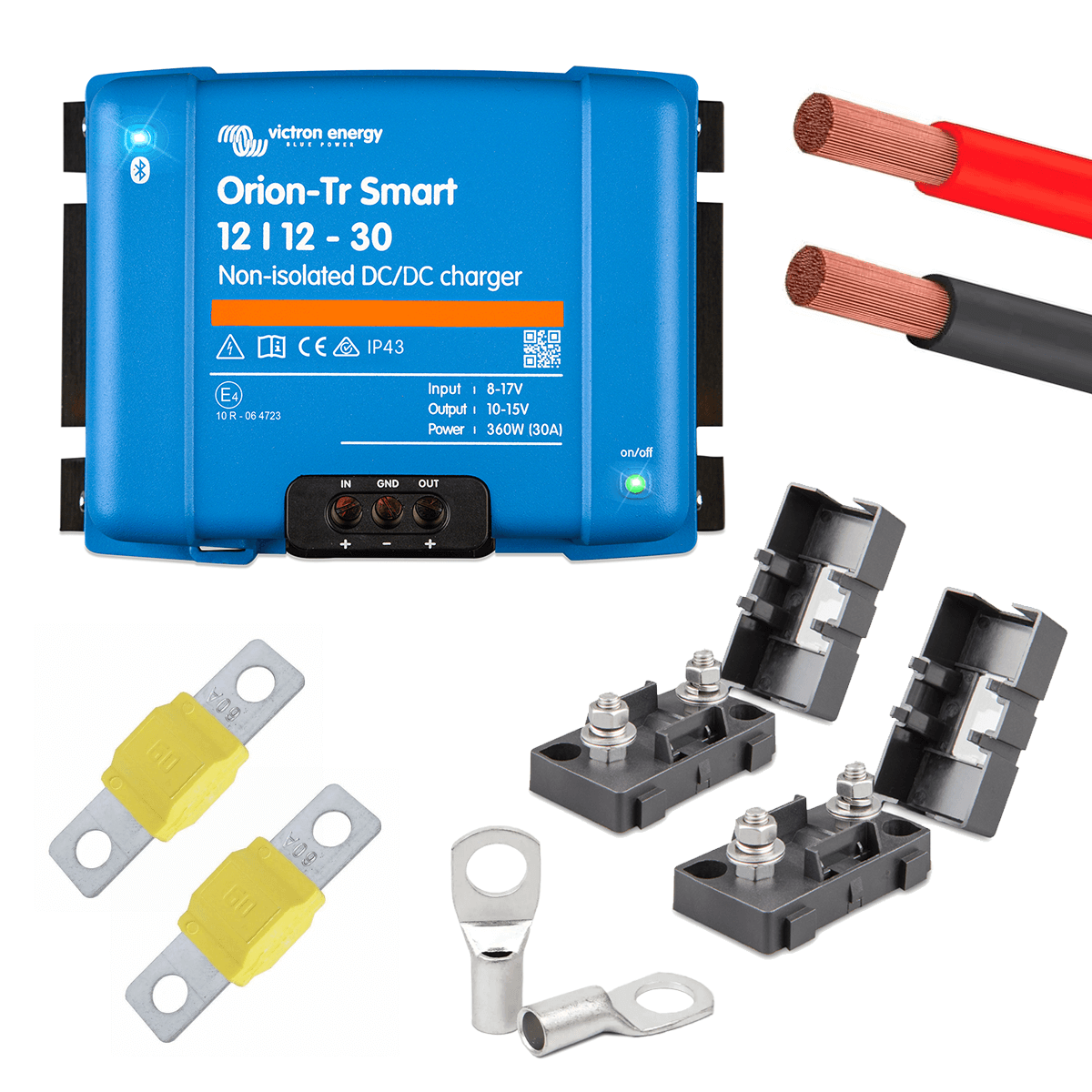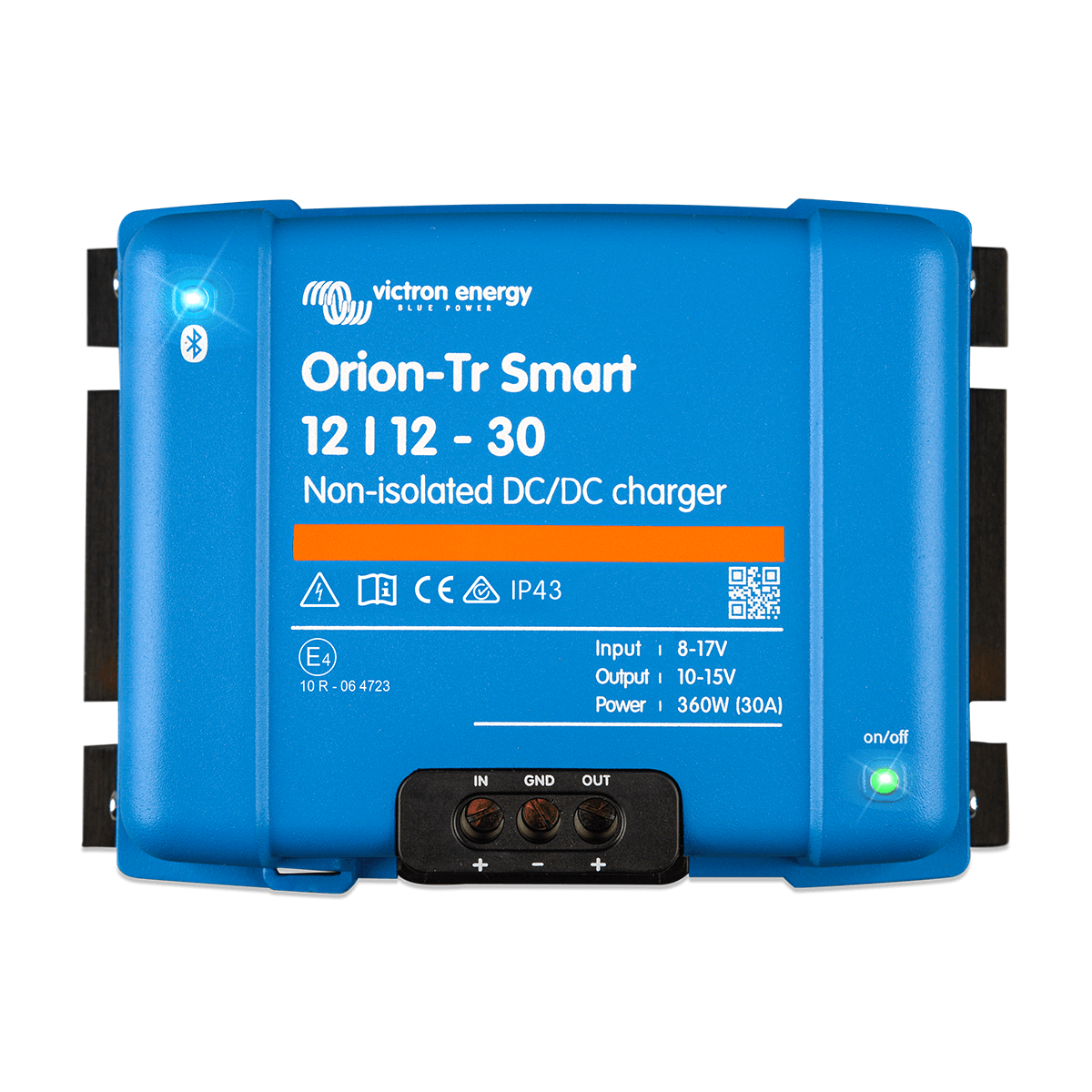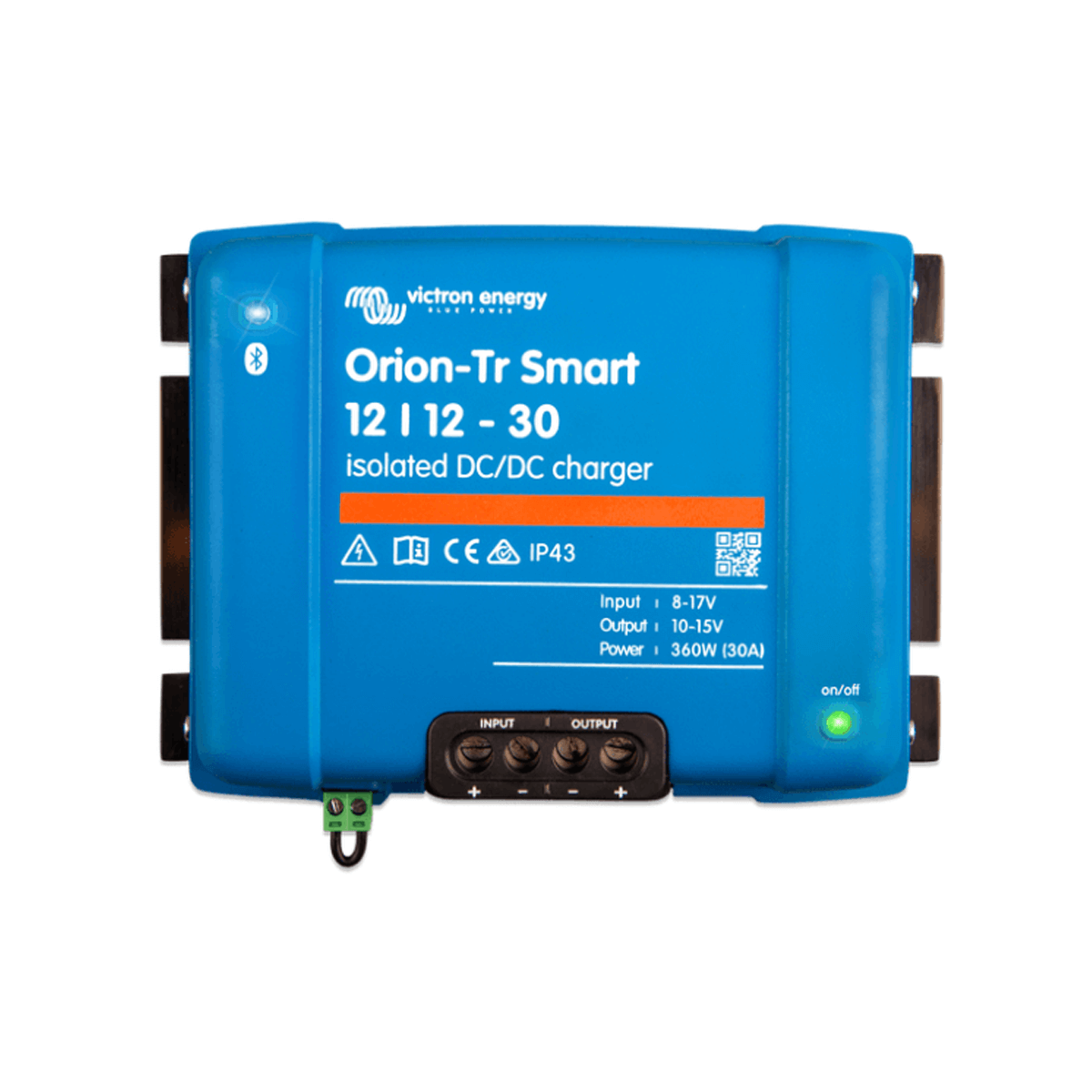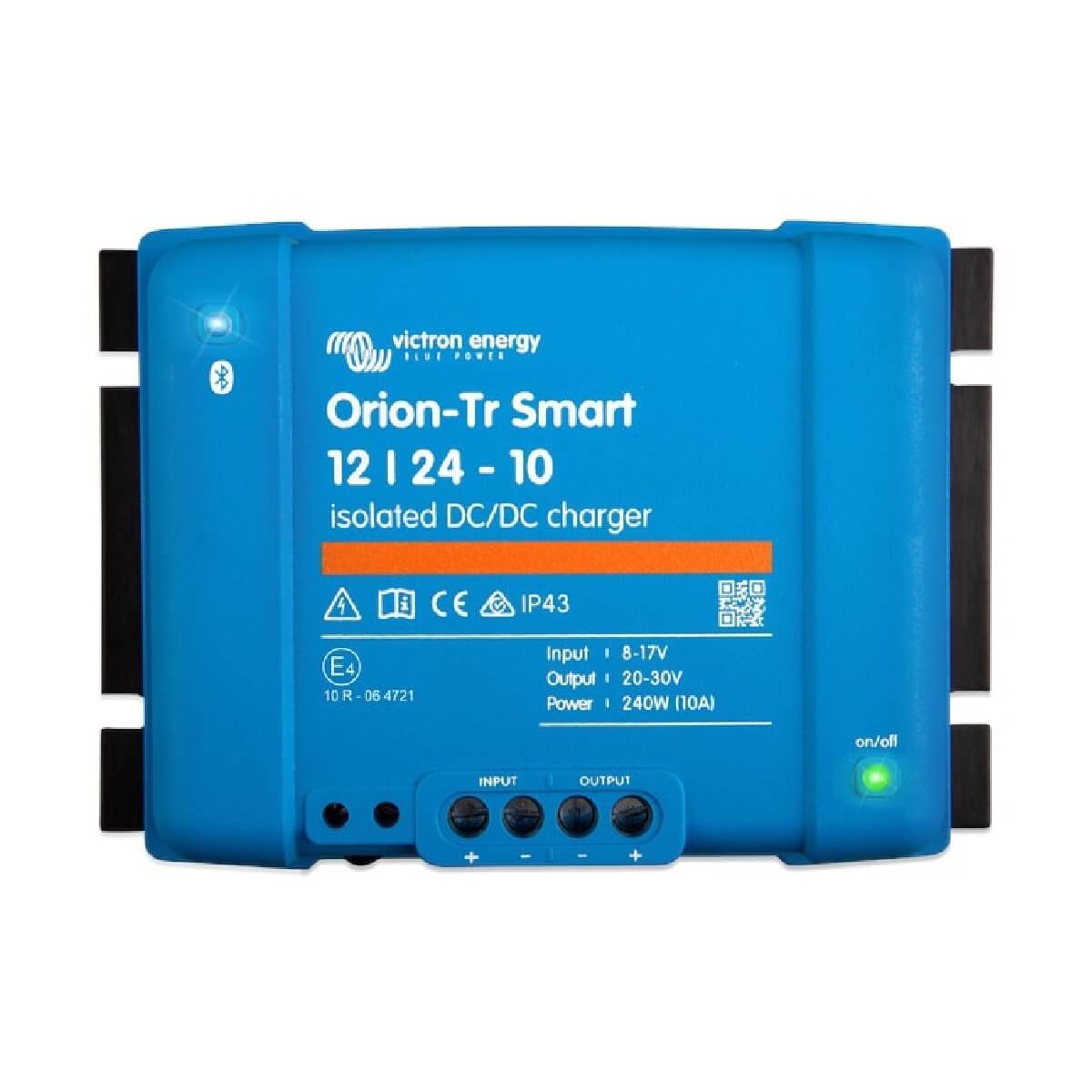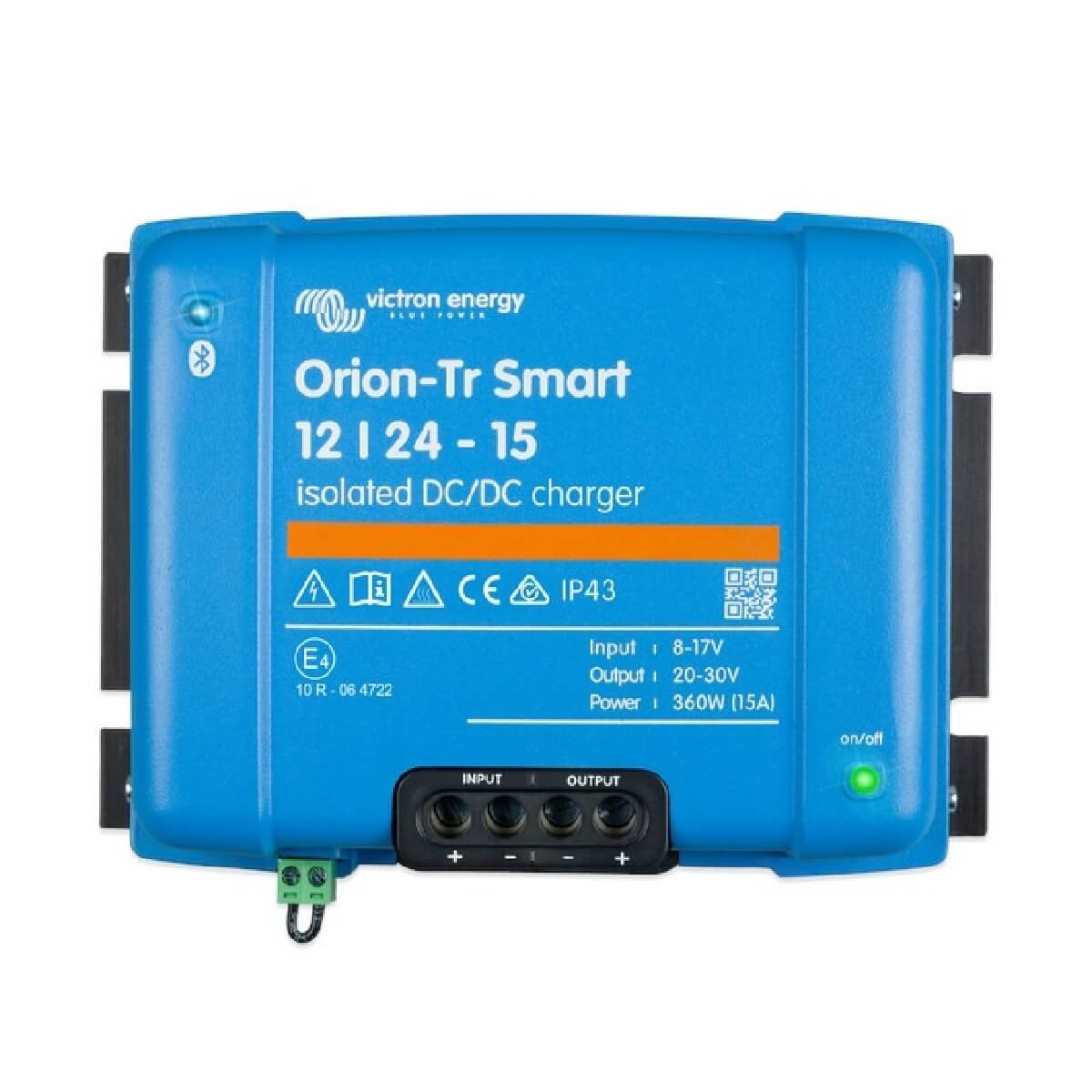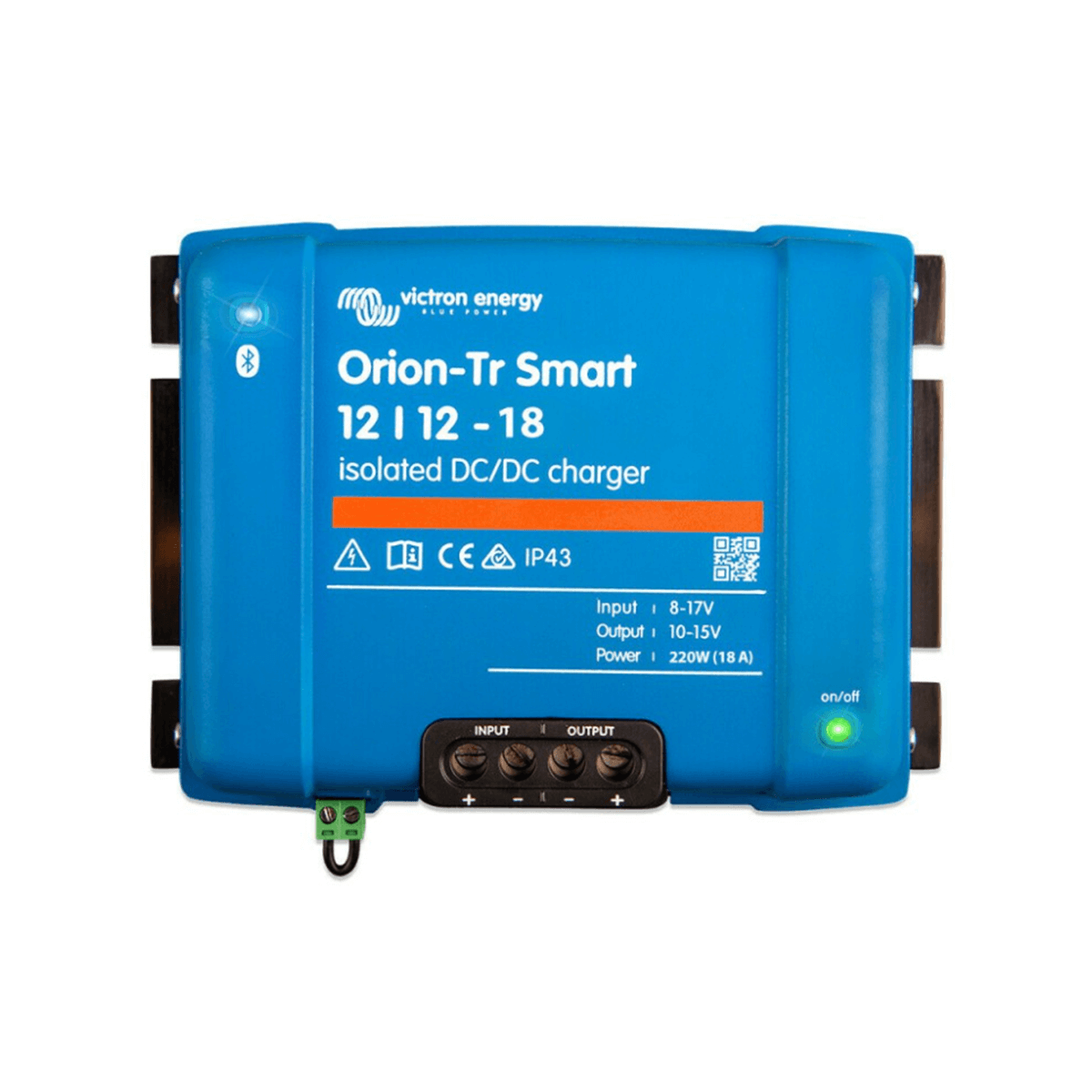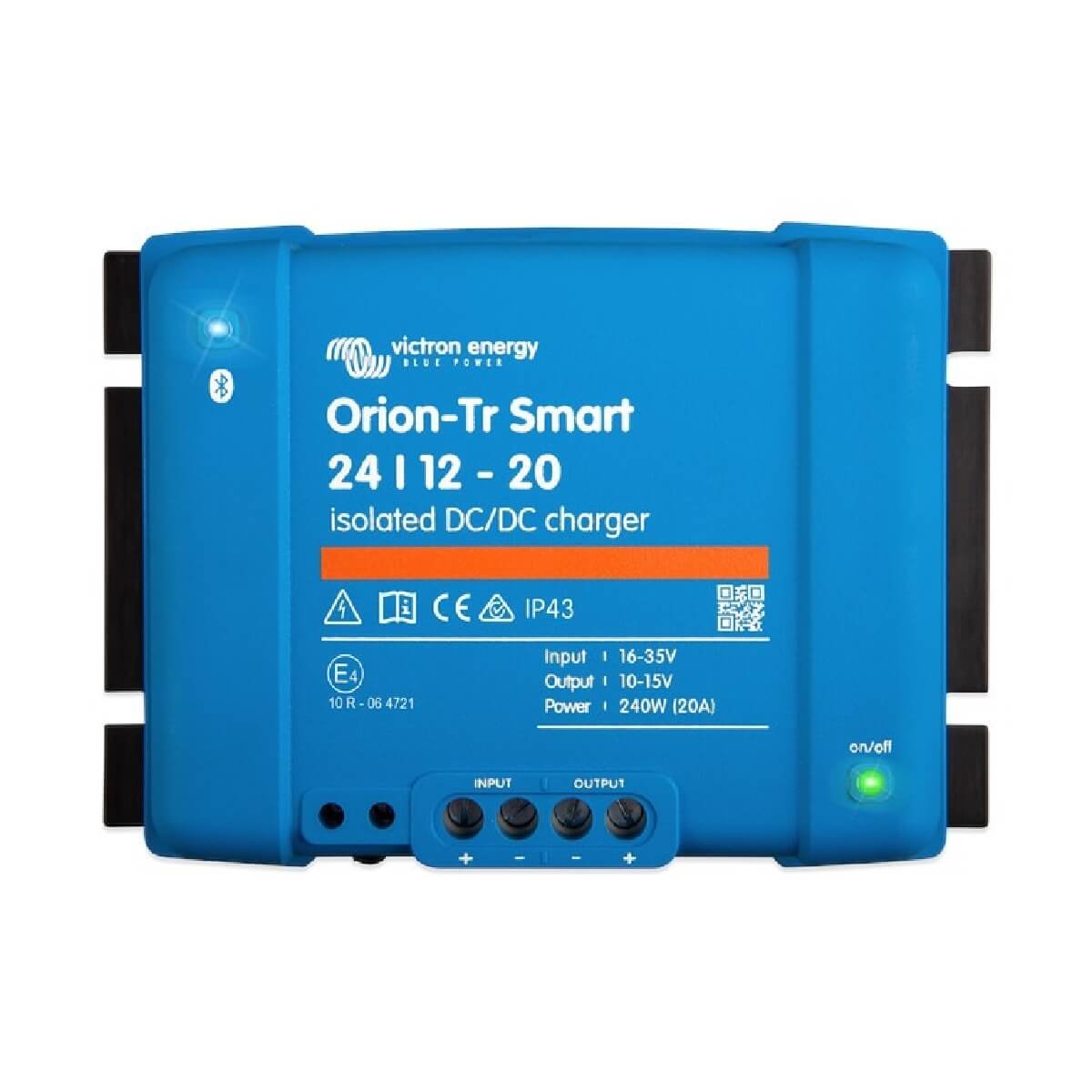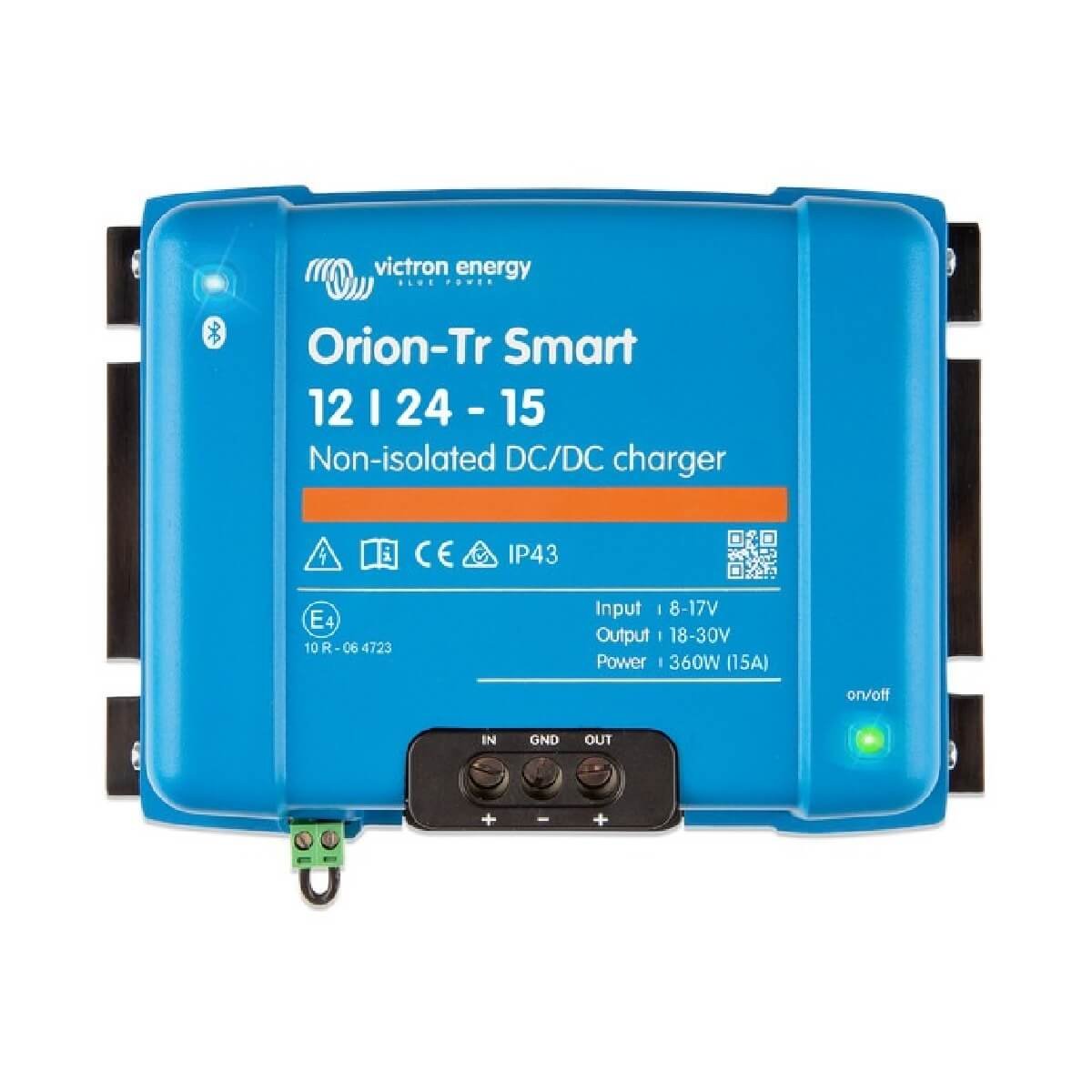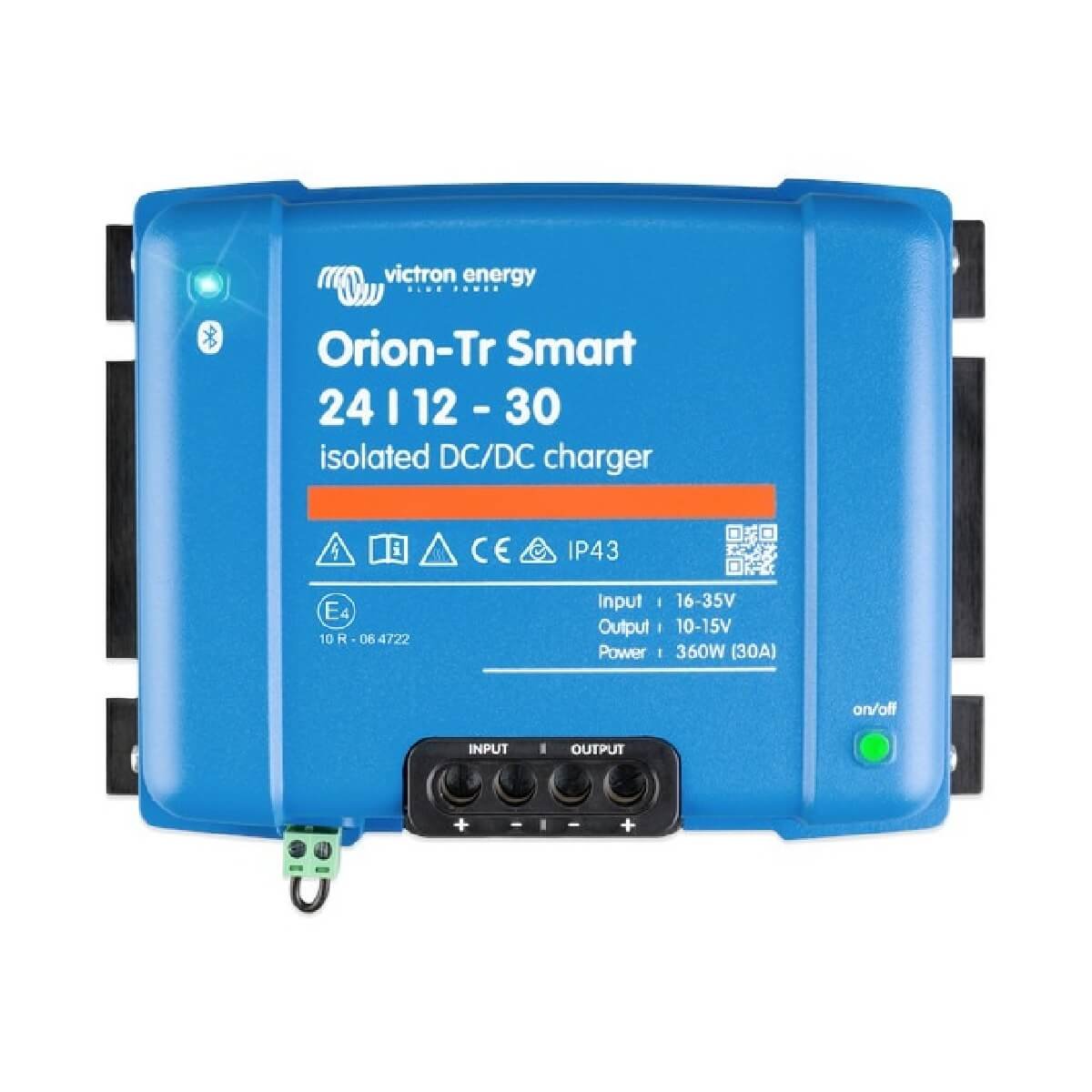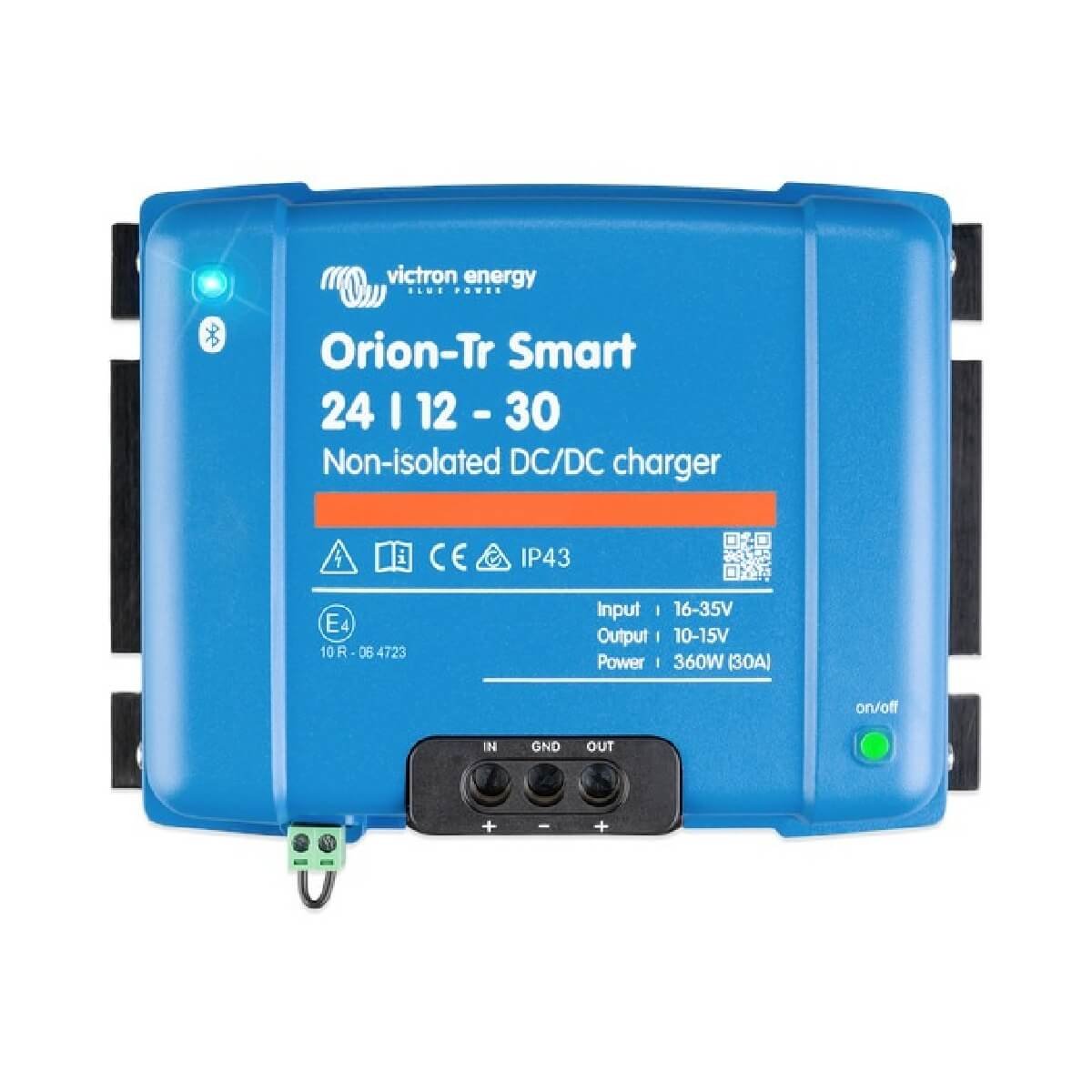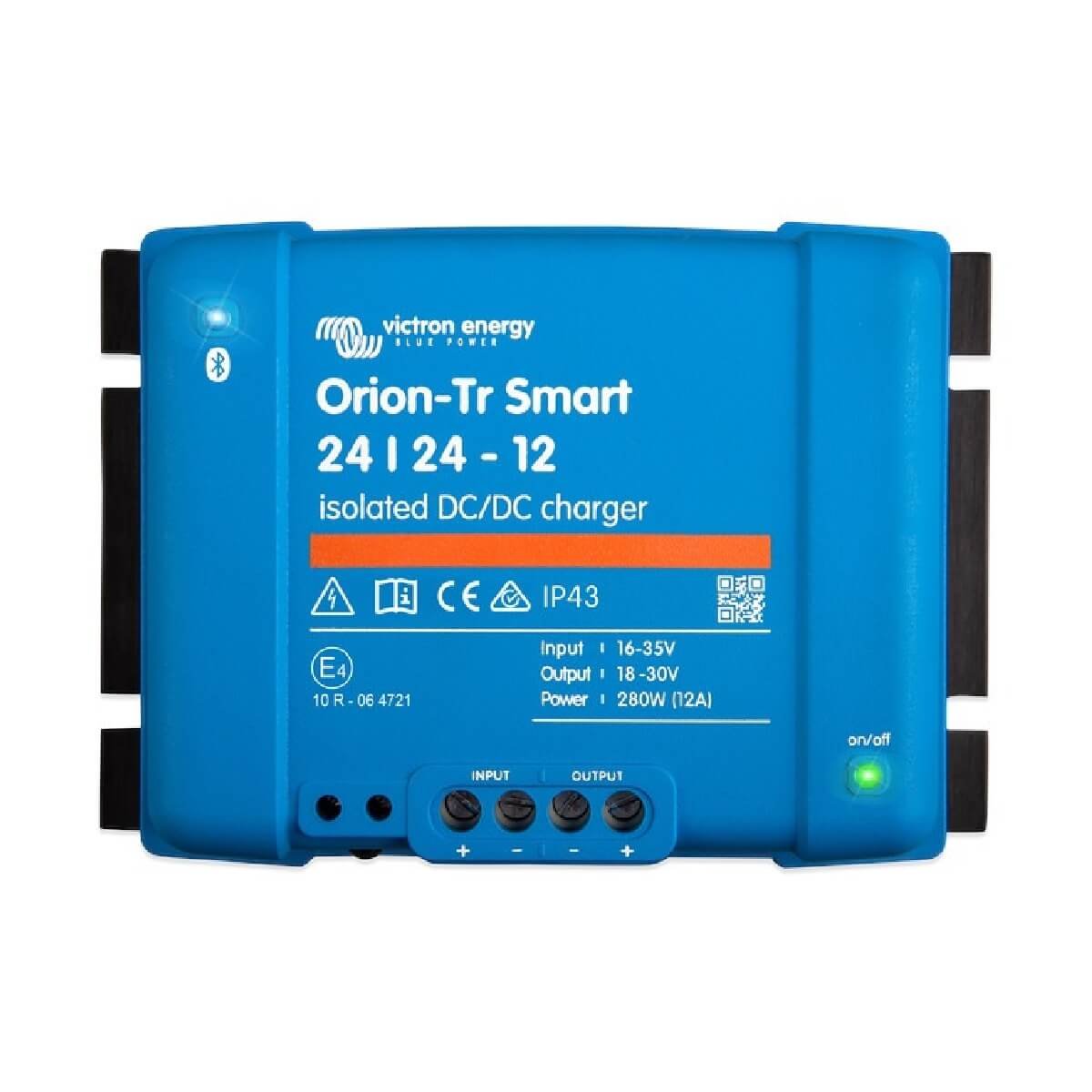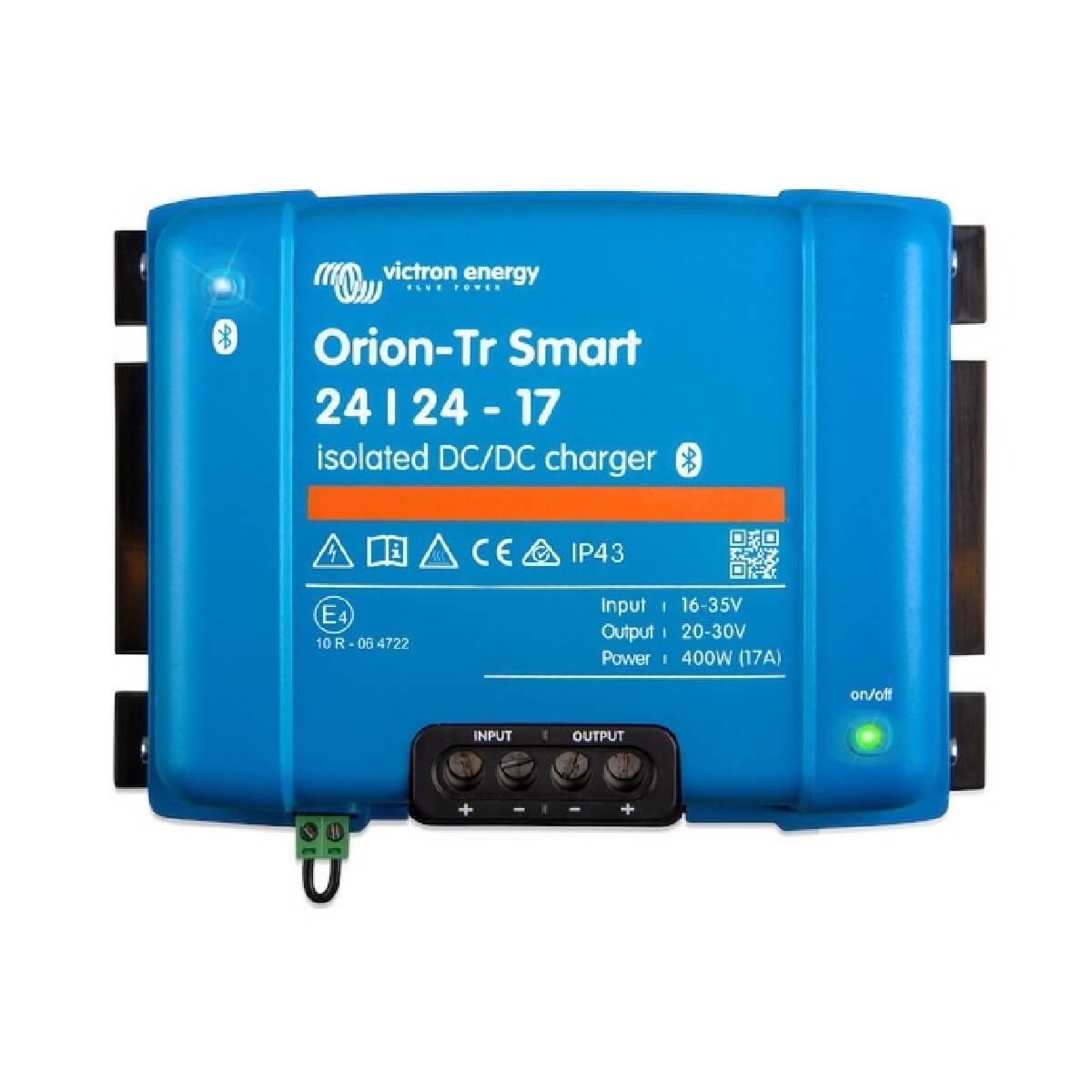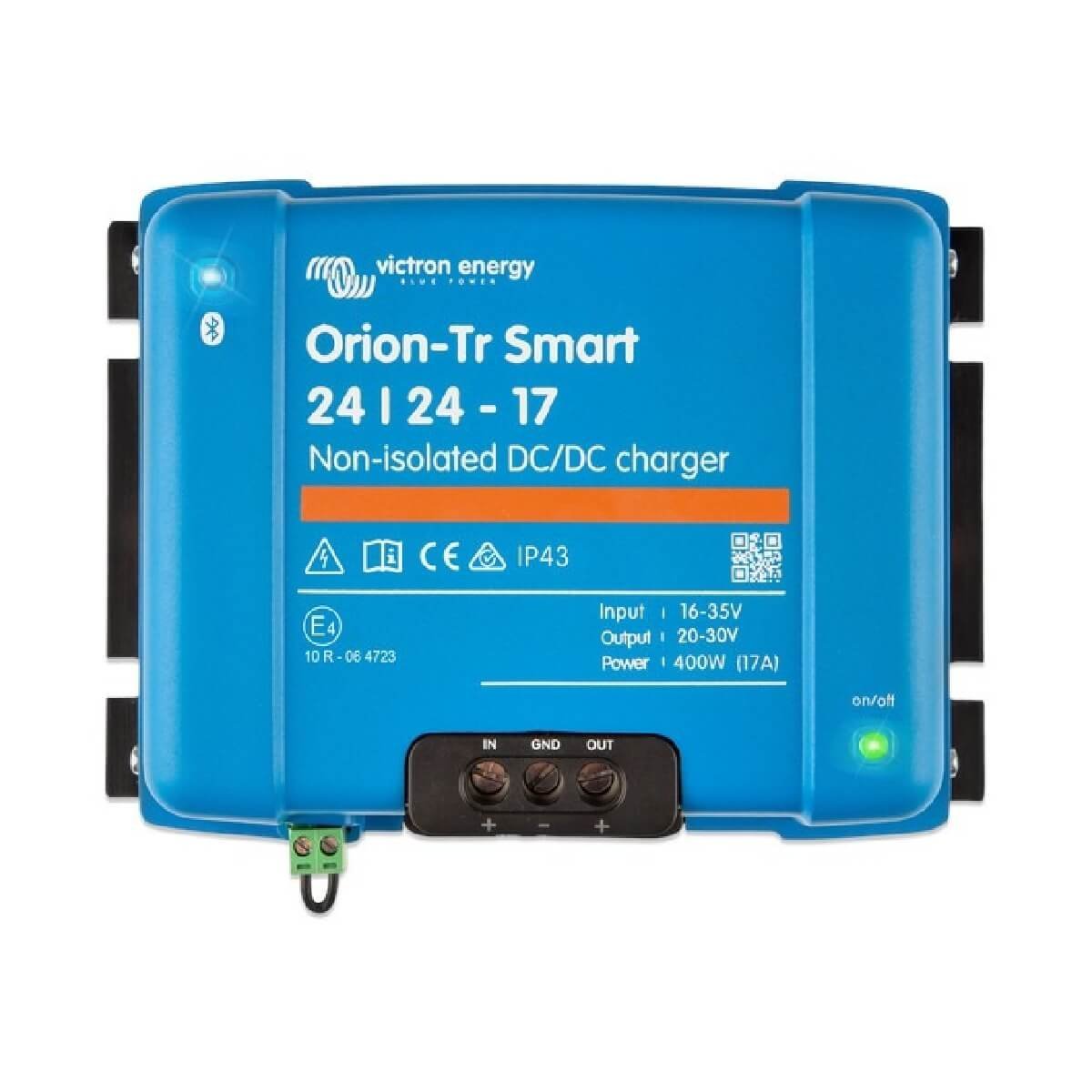DC-DC battery chargers
What is a DC-DC charger?
A DC-DC battery charger (sometimes known as a battery to battery charger or ‘B2B’ charger) charges your leisure battery as you drive. It connects to your vehicle’s alternator via the starter battery. So, as the alternator recharges your starter battery, it also recharges your leisure battery.
Your alternator and starter battery output a variable voltage. In contrast, your leisure battery requires a stable voltage to recharge. So, a DC-DC charger outputs this stable voltage to ensure your battery charges correctly. Furthermore, it matches the required charging profile of different battery types and chemistries, to ensure your batteries are fully charged.
Ready-to-go B2B kits Designed by experts 🔧
Already know what you need? Safe and robust kits, designed by engineers. Plus – when you purchase, we’ll send you a free wiring diagram and installation guide.
Shop nowB2B chargers vs VSRs
VSR stands for ‘voltage sensing relay’, sometimes known as a ‘split charger’. It does what it says on the tin – it is a relay that ‘senses’ the voltage from your starter battery, and ‘splits’ the charge. It is not as intelligent as a B2B charger – think of it almost like a switch. When your vehicle turns on, the voltage output from the alternator increases. When it goes above a certain value (usually ~14V), the split charger makes a connection, like turning on a switch.
A Victron Cyrix-ct voltage sensing relay
A Victron Orion smart DC-DC charger
Because of this, it’s only possible to use a VSR with batteries of the same chemistry. Most starter batteries are lead-acid. So, if you have a lead-acid leisure battery, you can use a VSR. In contrast, if you have a lithium leisure battery, you need to use a DC-DC battery charger.
AGM and gel are both types of lead-acid leisure battery.
Cost
Cost is one of the big differences between a VSR and a DC-DC charger. Where a basic VSR may only cost around £20, a DC-DC battery charger costs upwards of £100. So, if you’re on a budget, you may want to opt for a split charger. However, there is another scenario when it’s not possible to use a VSR…
Smart alternators
If your vehicle has a smart alternator, you won’t be able to use a VSR. Vehicles with a smart alternator have their voltage controlled by the Engine Control Unit (ECU). After the van has been on for a short time, and if the starter battery is close to being fully charged, the voltage will drop well below 14V. This reduces fuel consumption and lowers emissions. Because of this, any vehicle with a “smart” alternator can’t use a standard VSR that relies on a constant high voltage while driving.
Regenerative braking adds more complications. As you brake, the smart alternator uses the kinetic energy from braking to charge the starter battery. This generates a much higher voltage than you would otherwise see (15V+, rather than around 14V). AGM, gel, and lithium batteries are sensitive to overcharging. Voltages above 14.4V, such as the high voltages seen from regenerative braking, can cause gas bubbles to form. This damages the battery and dramatically shortens their lifespan.
How do you find out if your vehicle has a smart alternator or regenerative braking? Well, most Euro 5 vehicles will have both a smart alternator and regenerative braking. So, if your vehicle was built in 2013 or later, it’s very likely it will have both of these features.
Isolated vs non-isolated DC-DC battery chargers
When researching DC-DC chargers, you may have come across ‘isolated’ and ‘non-isolated’ versions. But what does this mean? Well, an ‘isolated’ charger is isolated from your system. In contrast, a ‘non-isolated’ version is not isolated from your system – it shares a common ground. So, it’s only possible to use a non-isolated B2B charger if you have a common chassis ground.
Most vehicles have a common chassis ground – this simply means that the starter battery is earthed to the vehicle’s chassis. When you ground your electrical system to the chassis, it will share this common ground. This connects the negatives without having to make an additional cable run.
So, when might you need to use an isolated DC-DC charger? Well, if you have an overlander with a chassis cab, the habitation box (the bit you live in!) may not be made of metal, or may not have a connection back to the metal chassis. However, it’s worth noting that even in this instance, you should still form a common chassis ground. You can achieve this by drilling a hole through the habitation box, and connecting the earth from your system to the chassis.
The other – very niche! – exception to the common chassis ground rule is in ex-military vehicles. Military vehicles tend to use an isolated system due to carrying highly sensitive electronic equipment, which a common ground interferes with. Instead of using a common chassis ground, these vehicles have separate ground paths for different electronic circuits. So, if you are converting an ex-military vehicle, you may need to opt for an isolated charger.
Starter battery voltage
Before you choose a DC-DC charger, you’ll need to know the voltage of your starter battery. This will typically be 12V, but in some instances, it could be 24V. Typically, ex-emergency and service vehicles such as ex-ambulances and fire trucks often have a 24V battery. Additionally, slightly larger vehicles, such as a Mercedes Vario, may make use of a 24V starter battery. Overlanders generally tend to have 24V batteries, as well as semi-trucks, lorries and coaches.
You can check what size starter battery you have by locating the starter battery on your vehicle. Simply look for the battery voltage written on the battery. Note – a 12V battery may say ‘12.8V’ and a 24V battery may say ‘25.6V’.
Once you know your starter battery voltage, make sure you purchase a DC-DC battery charger that matches your starter battery and system voltage. So, if you have a 12V starter battery and 24V system voltage, you would need a 12/24 battery to battery charger.
Campervan electrics leaving you confused?
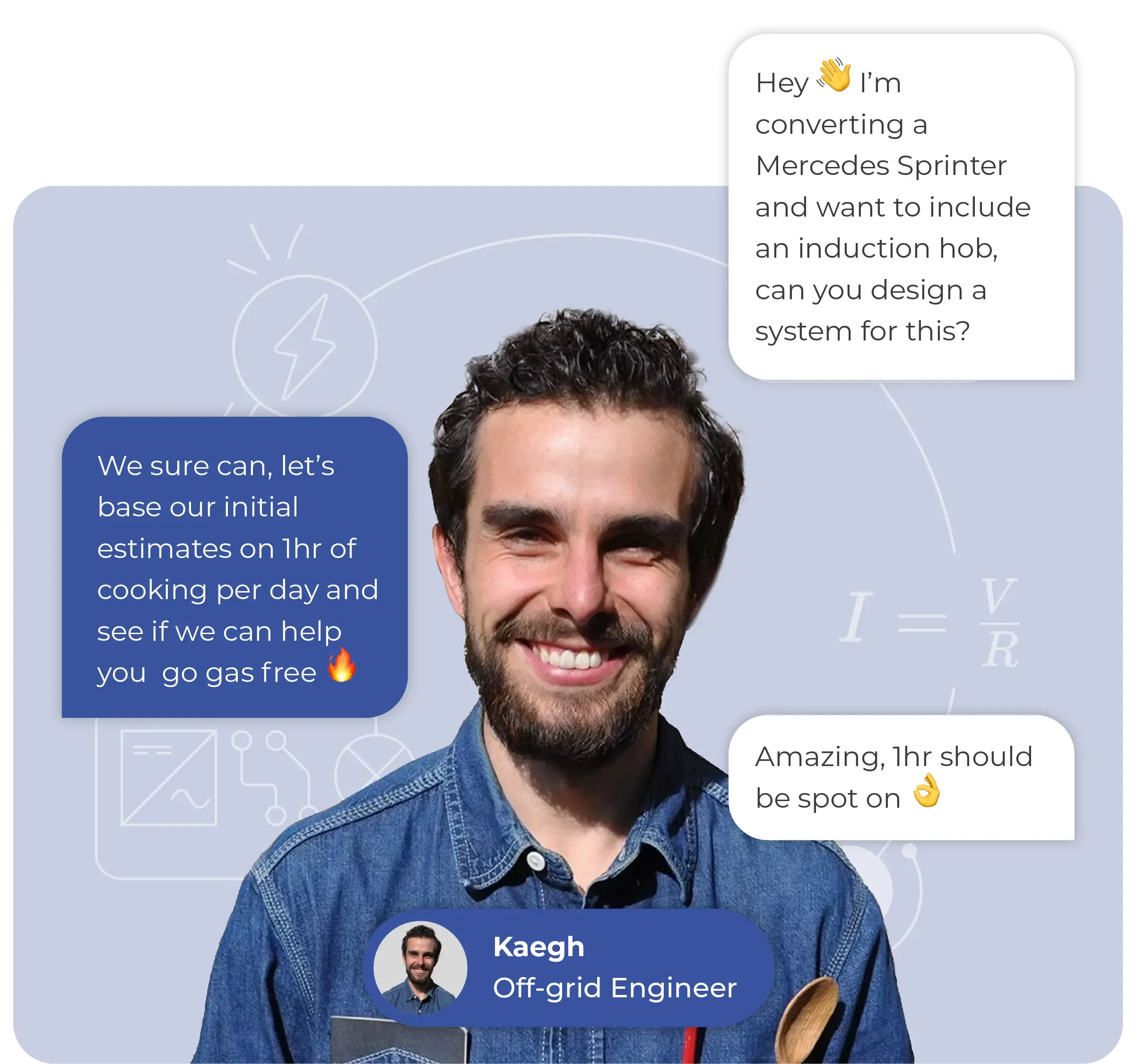
What size DC-DC battery charger do I need for my campervan?
There are a couple of factors to consider when sizing a battery to battery charger:
- How quickly you want to recharge your leisure batteries
- How quickly the leisure battery you have can be recharged
We dive into the details of how to answer this question in our article: How to choose the right battery to battery charger.
Once you know what current rating you need from your B2B charger system, you need to consider what your vehicle can safely support.
Victron DC-DC chargers
The Victron Orion range of battery to battery chargers are available in a number of voltage and current ratings. Additionally, all chargers are available in both isolated and non-isolated models. The chargers are particularly useful in systems where there is a need to step up or step down the voltage, such as in the example mentioned above.
The Victron Orion Smart chargers come with Bluetooth. We strongly recommend opting for the Smart chargers, as there are a number of important settings to configure correctly before first using the B2B charger. Configuring these through the Victron Connect app is straightforward.
Orion chargers are easy to install within a campervan electrical system, with only a couple of cable runs required to be up and running. Our battery to battery charger kits all include Victron Orion DC-DC battery chargers, and all cable, fuses and lugs required to fully install the subsystem. Additionally, every kit is provided with a comprehensive wiring diagram and installation guide to make installation simple.
The new Orion XS charger is a level-up for Victron’s smart chargers. The 50A unit is physically smaller than the 30A Orion, and its aluminium circuit board minimises heat. Not only that, but it has a VE.Direct port. So, you can now connect the Orion charger to your smart network, such as a Cerbo GX monitoring system.
DC-DC battery charger wiring diagram
Not sure how to wire up your DC-DC charger? Our example wiring diagram shows exactly how to connect the Victron Orion XS 50A B2B charger in a campervan electrical system. This example is based on a system utilising a Lynx Distributor for power distribution.
Read our B2B charger articles ⚡
Need help with the rest of your electrical system?
Our electrical system guidebook pages cover everything you need to know about your campervan electrical system ⚡



